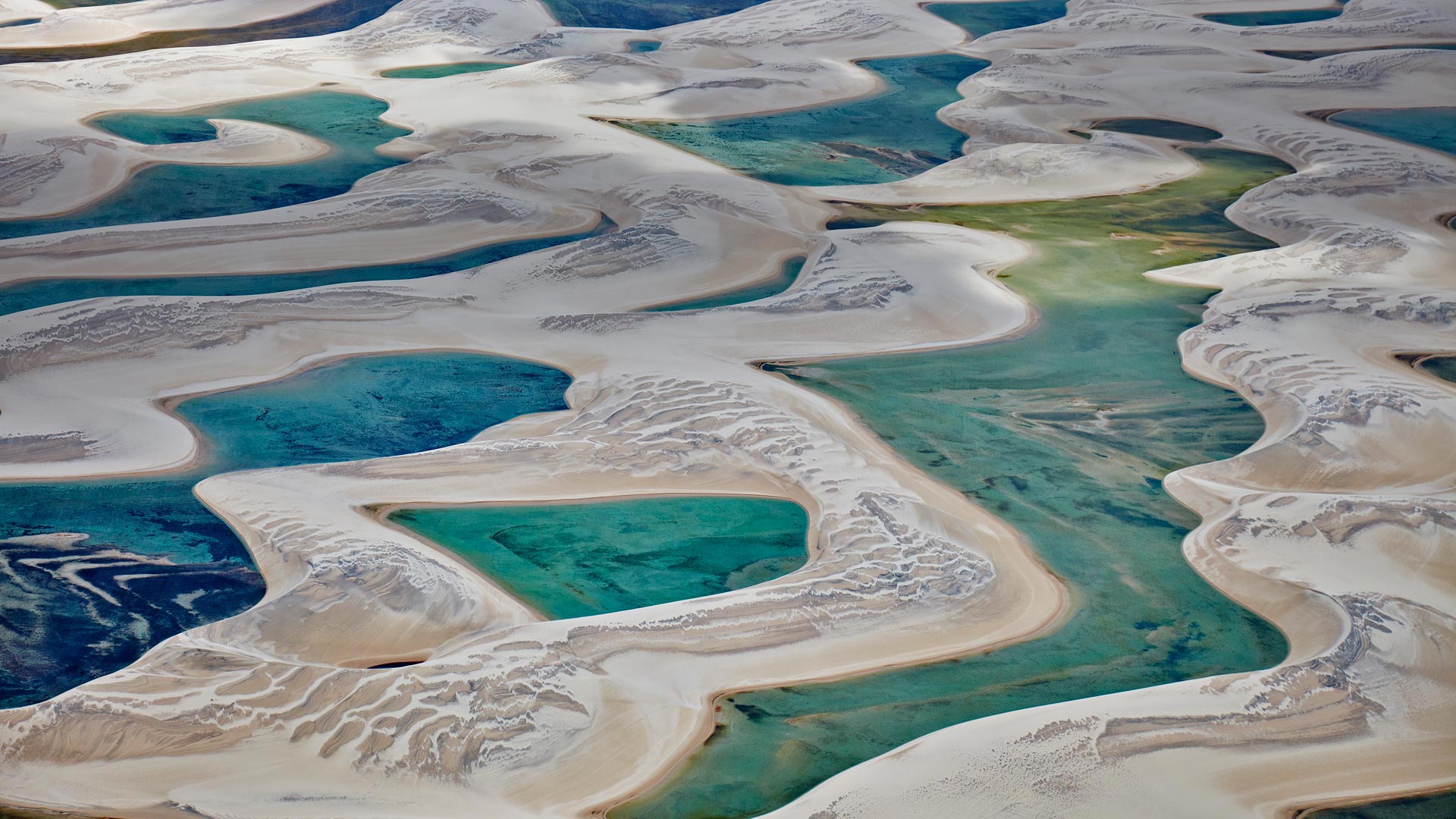同步发光萤火虫照亮了大烟山国家公园中的森林 Synchronous fireflies illuminate the forests of Great Smoky Mountains National Park, Tennessee (© Floris van Breugel/Minden Pictures)
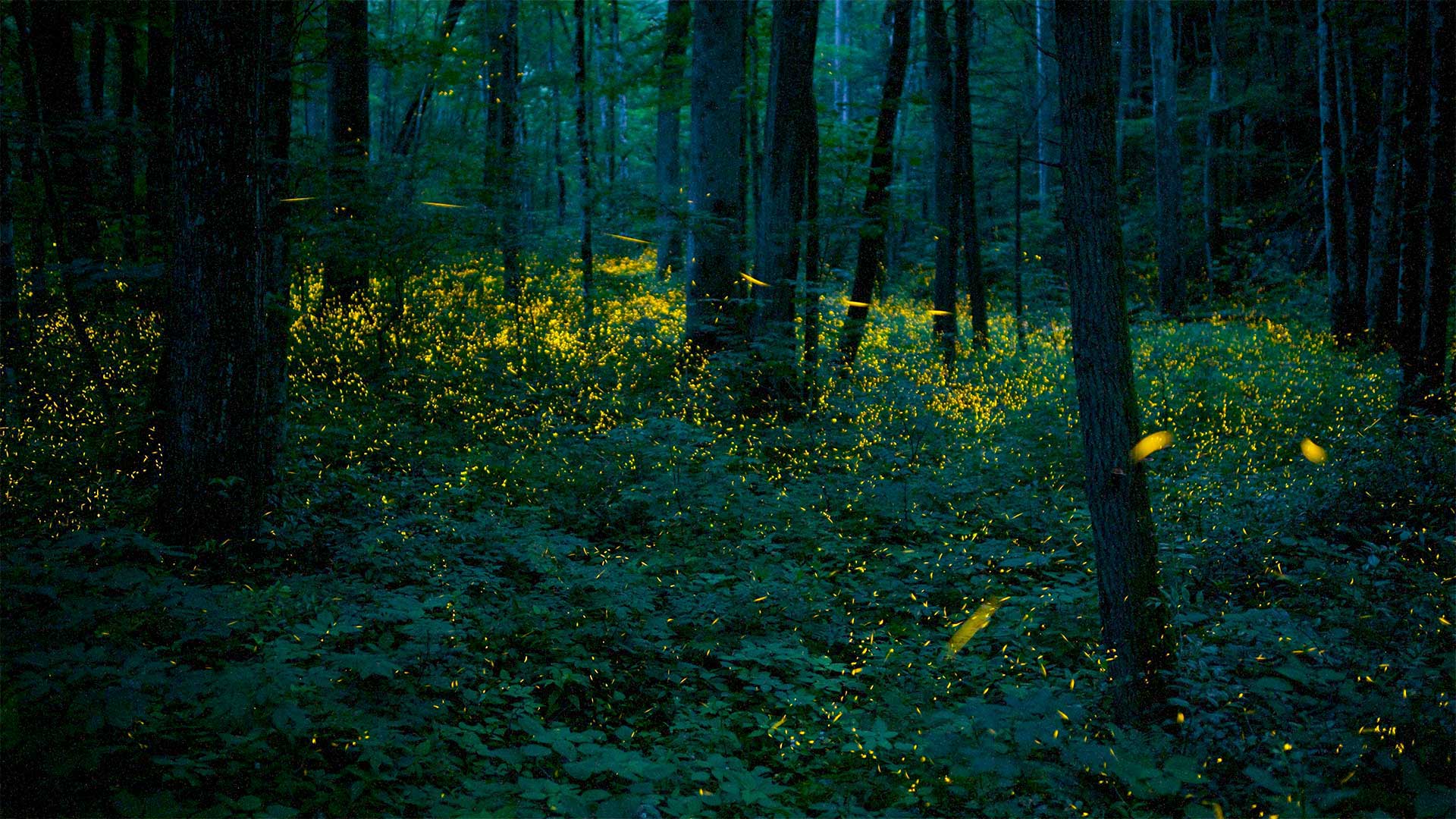
同步发光萤火虫照亮了大烟山国家公园中的森林 Synchronous fireflies illuminate the forests of Great Smoky Mountains National Park, Tennessee (© Floris van Breugel/Minden Pictures)
By the light of the fireflies
Every year between late May and mid-June, synchronous fireflies gather into a sparkling, rhythmic lightshow in the forests of Great Smoky Mountains National Park. As part of their 2-week mating display, the female lighting bugs synchronize their flashes with nearby males so that every few seconds waves of light ripple through the woods. While Photinus carolinus is only one of at least 19 species of fireflies that live in Great Smoky Mountains National Park, synchronous fireflies can be found in a few other places on Earth as well, particularly in Southeast Asia.
Each species of firefly has a characteristic flash pattern that helps the males and females recognize each other. In most species, like this one, the males fly and flash, while the females generally stay still and respond with a flash of their own. It's not clear why some species of fireflies flash synchronously, although some hypotheses involve diet, social interaction, and altitude. No matter why they do it, the flashing of lightning bugs is a magical sight to see—and we can all use a little magic sometimes.
两名山地车骑手在白缘公路上沿着谢福小道的转弯处骑行 ,犹他州峡谷地国家公园 (© Grant Ordelheide/Tandem Stills + Motion)
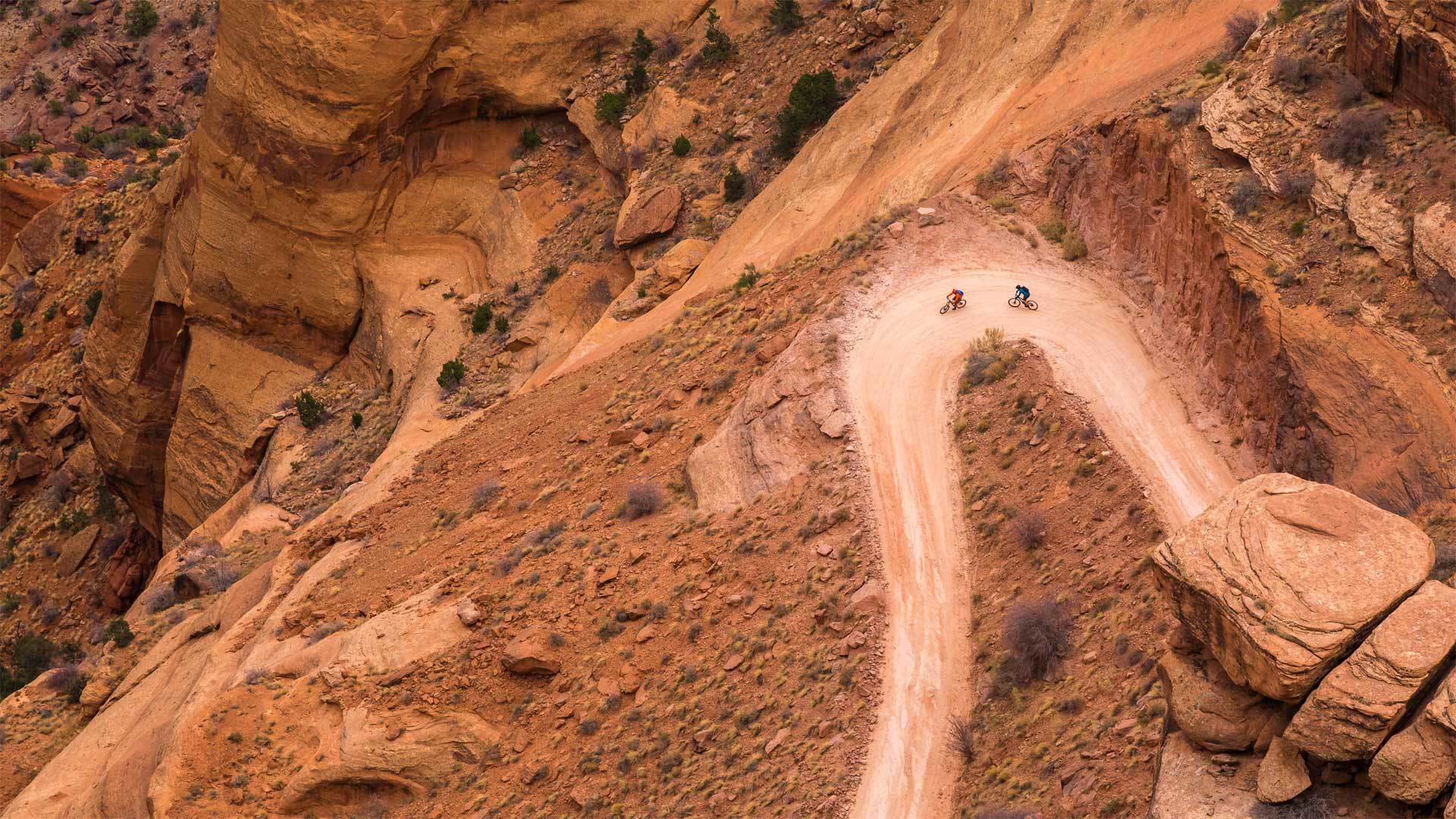
两名山地车骑手在白缘公路上沿着谢福小道的转弯处骑行 ,犹他州峡谷地国家公园 Two mountain bike riders make their way down the Shafer Trail switchbacks on White Rim Road in Canyonlands National Park, Utah (© Grant Ordelheide/Tandem Stills + Motion)
For the love of bikes
In honor of World Bicycle Day, we share a bird’s-eye view of two mountain bikers traveling on the Shafer Trail switchbacks of White Rim Road in Canyonlands National Park in Utah. In 2018, the UN officially recognized 'the uniqueness, longevity and versatility of the Bicycle, which has been in use for two centuries, and that it is a simple, affordable, reliable, clean and environmentally fit sustainable means of transportation.'
German Karl von Drais is credited with creating the first version of a bike in 1817; it was a heavy wooden contraption that the rider pushed forward with his or her feet. It had many names—the 'draisine,' velocipede, and dandy horse--and it was a fad for a few years, but eventually the bike was banned because it was too dangerous (no brakes!).
The bicycle has gone through many iterations since then, from the less-than-comfortable 'boneshaker' in the 1860s, followed by the 'penny-farthing' with its huge front wheel, to today’s popular fatbikes and e-bikes. During one of America’s biking booms, in the 1970s, more bikes were sold than cars. Today bicycles remain as popular as ever, so whether it’s for recreation or transportation, the bicycle is here to stay.
辛华达瀑布,加拿大贾斯珀国家公园 Sunwapta Falls in Jasper National Park, Alberta, Canada (© Schroptschop/Getty Images)
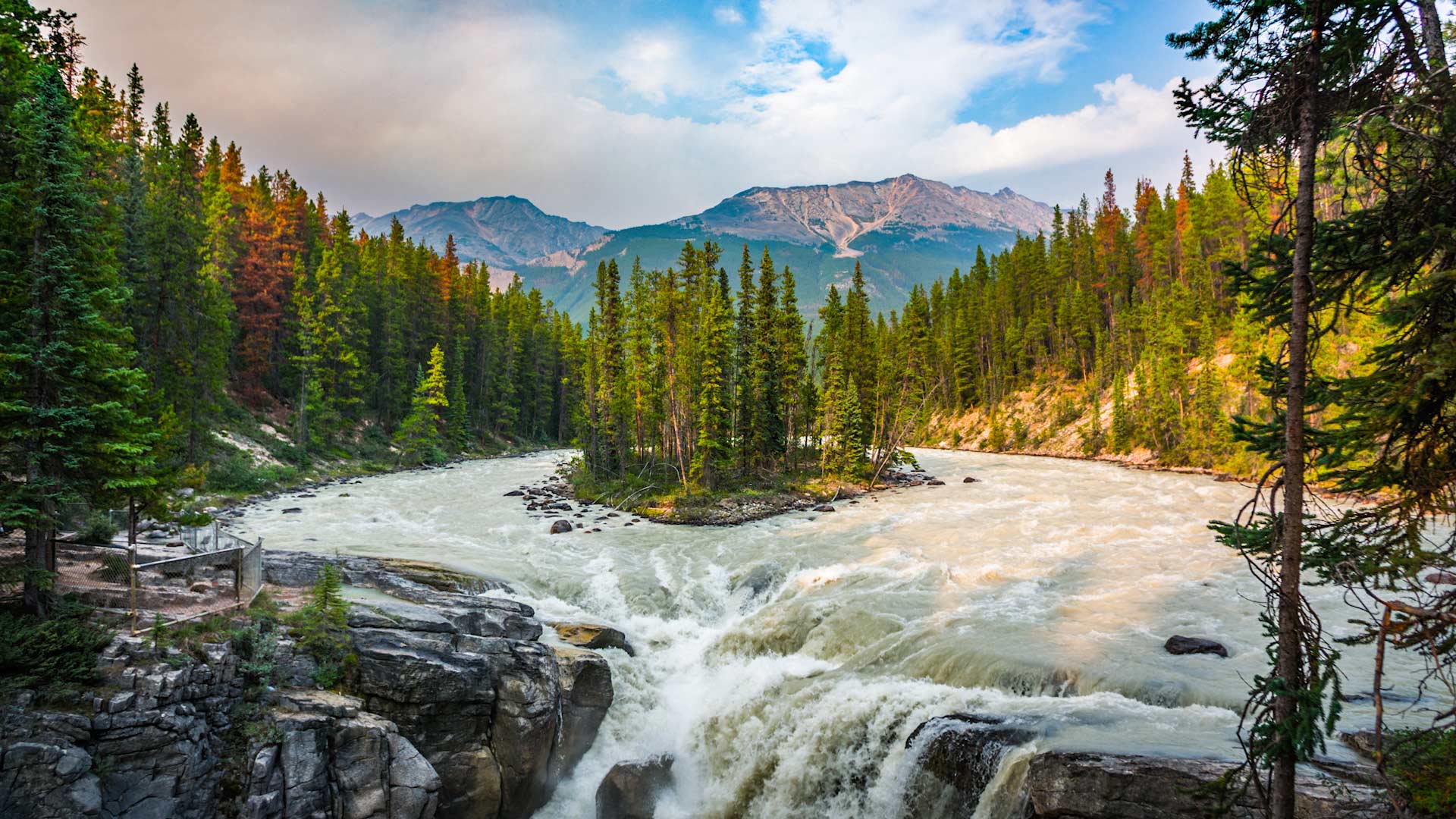
辛华达瀑布,加拿大贾斯珀国家公园 Sunwapta Falls in Jasper National Park, Alberta, Canada (© Schroptschop/Getty Images)
Falling for the Canadian Rockies
Sunwapta Falls is one of several waterfalls in Jasper National Park in Alberta, Canada, formed by hanging valleys. These valleys were created 8,000 years ago when glacier ice receded. Sunwapta Falls is actually a pair of waterfalls, a lower and upper one. Their water comes from the Athabasca Glacier, so volumes are higher in the summer due to seasonal glacial melting. Jasper National Park is the largest national park in the Canadian Rockies, with more than 4,000 square miles for camping, hiking, water sports, and other activities. Wildlife in the park includes elk, grizzly bears, moose, bighorn sheep, and caribou.
大沼泽地国家公园鸟瞰图 Aerial view of Everglades National Park, Florida (© Tetra Images/Getty Images)
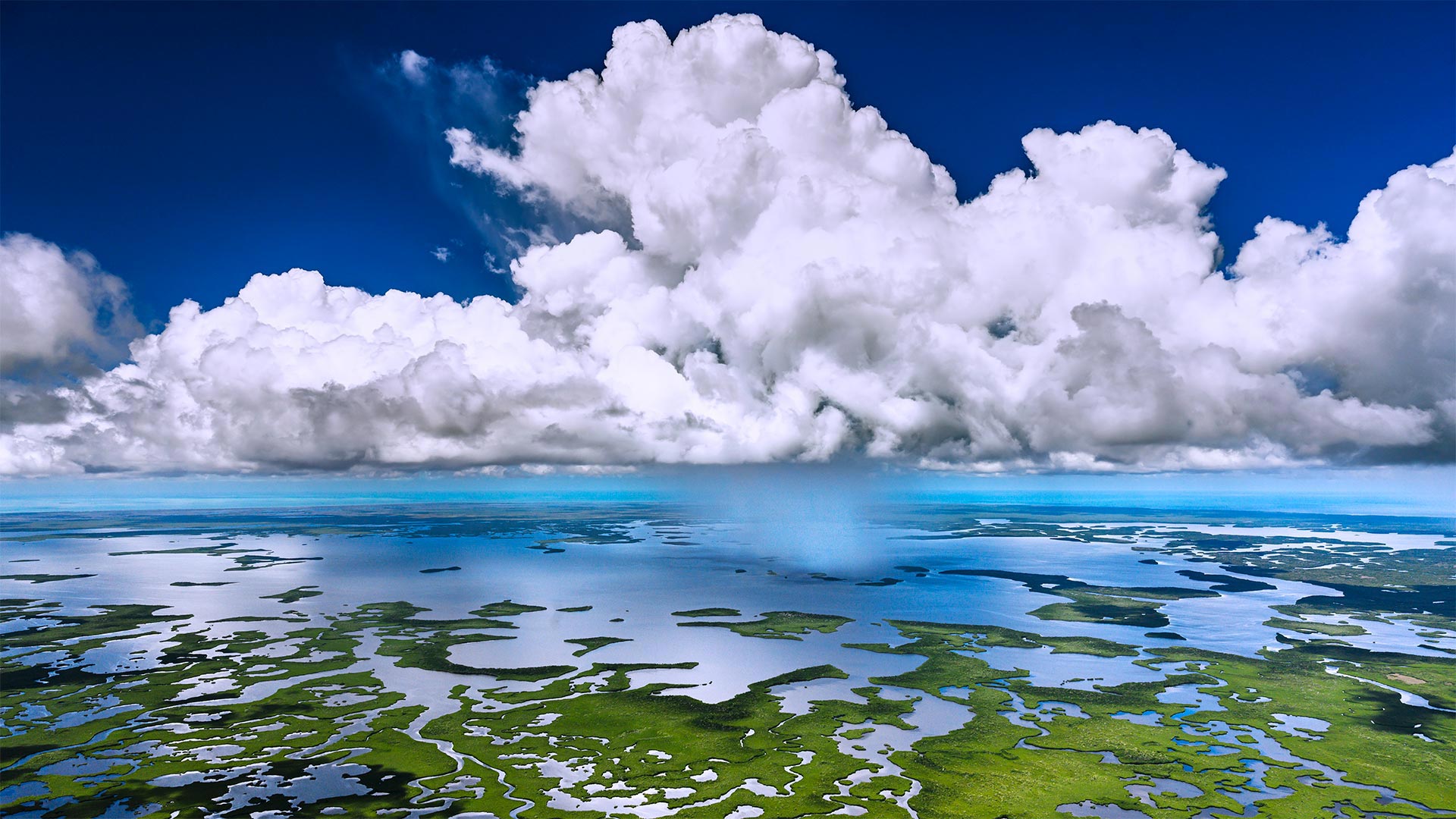
大沼泽地国家公园鸟瞰图 Aerial view of Everglades National Park, Florida (© Tetra Images/Getty Images)
Clouds over the 'River of Grass'
It's the beginning of the wet season in the Everglades, where it's typically hot and humid from May through November. Afternoon thunderstorms are common, bringing heavy rainfalls that subside quickly. The largest subtropical wilderness in the US, the Florida Everglades is essentially a slow-moving river, 60 miles wide and over 100 miles long. The water flows during the wet season from Lake Okeechobee southward across a limestone shelf to the southern tip of the Florida Peninsula. The complex ecosystem here is not found anywhere else on the planet.
Nicknamed the 'River of Grass' by conservationist Marjory Stoneman Douglas, the Everglades are full of sawgrass marshes, cypress swamps, and mangrove forests. In the early 20th century, water flow from Lake Okeechobee was increasingly diverted to support the development of South Florida, and it became clear that the Everglades were quickly vanishing. To help protect the fragile ecosystem, Everglades National Park was established in 1934, preserving about 20 percent of the original wetlands. While rising water levels can make it challenging to spot wildlife during the wet season, it's a critical season for the birds, crocodiles, manatees, and many more beautiful creatures that call the 'River of Grass' home.
大烟山国家公园中的咆哮溪,田纳西州 Roaring Fork in Great Smoky Mountains National Park, Tennessee (© Paul Hassell/Tandem Stills + Motion)
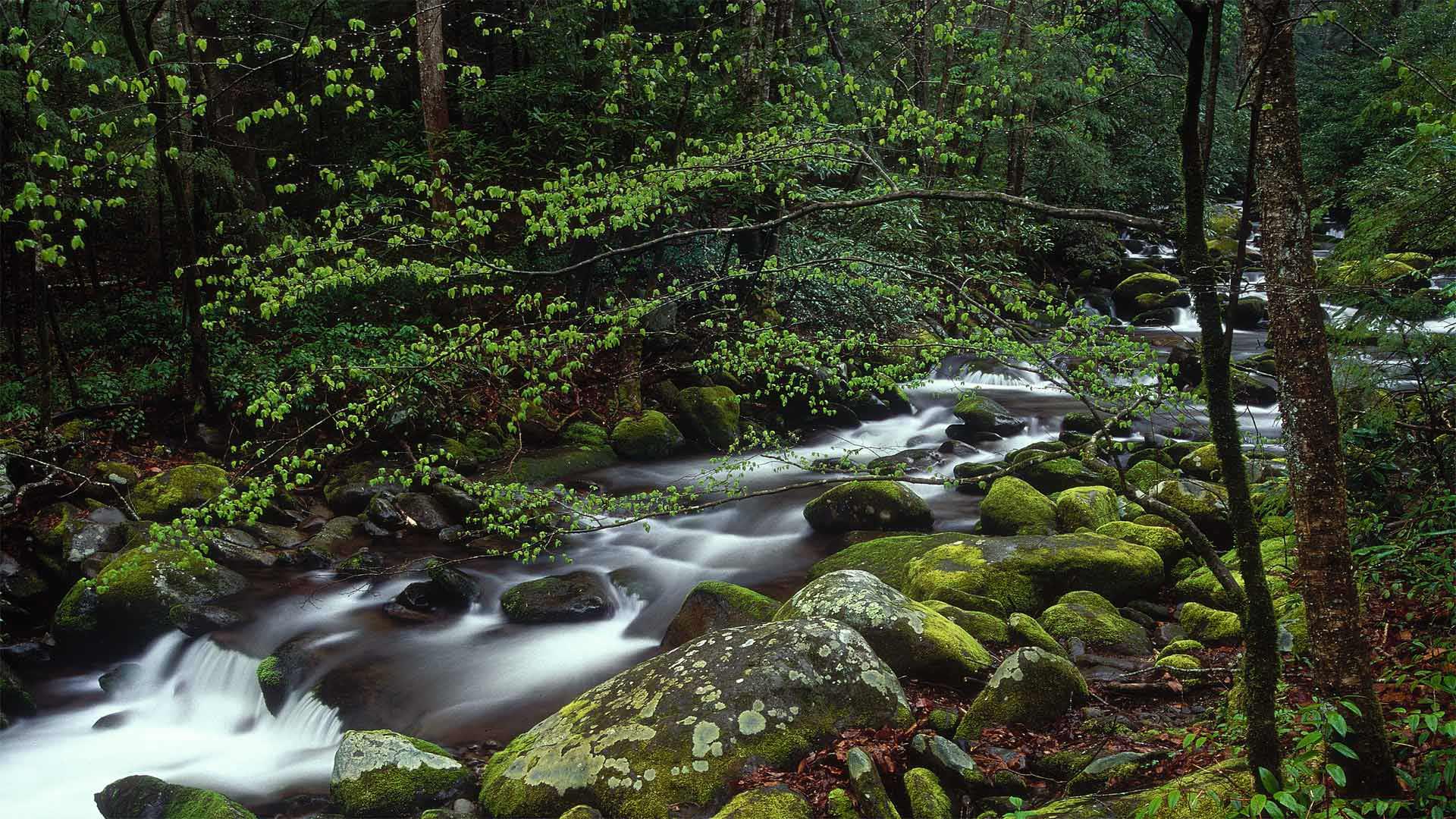
大烟山国家公园中的咆哮溪,田纳西州 Roaring Fork in Great Smoky Mountains National Park, Tennessee (© Paul Hassell/Tandem Stills + Motion)
Loud waters
Roaring Fork may seem like a misnomer for this mountain stream in Great Smoky Mountains National Park. During dry spells, it's an idyllic mountain stream. But Roaring Fork descends 2,500 feet over just two miles—a steep drop down Mount Le Conte. When heavy rains swell the stream, Roaring Fork transforms into a whitewater rush, with the sound of the surging water echoing off the sandstone walls of the mountain.
从Toroweap Overlook俯瞰大峡谷和科罗拉多河,亚利桑那州大峡谷国家公园 Grand Canyon and Colorado River from Toroweap Overlook, Grand Canyon National Park, Arizona (© Matteo Colombo Travel Photo/Shutterstock)
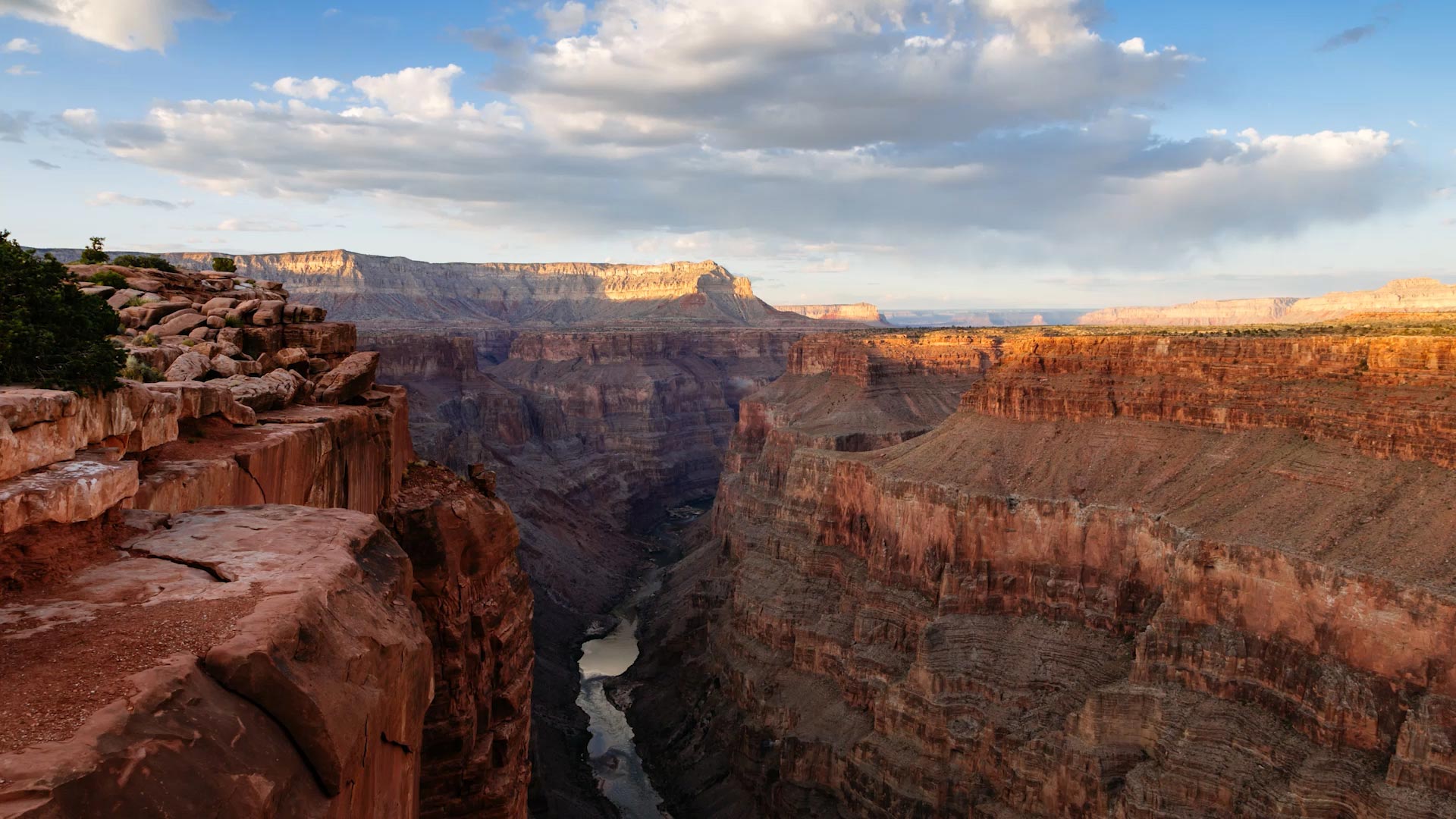
从Toroweap Overlook俯瞰大峡谷和科罗拉多河,亚利桑那州大峡谷国家公园 Grand Canyon and Colorado River from Toroweap Overlook, Grand Canyon National Park, Arizona (© Matteo Colombo Travel Photo/Shutterstock)
The last thing seen by Wile E. Coyote
We'd say, 'Don't look down,' but that'd kind of be missing the point: Verticality is what put Toroweap Overlook on the map. Situated on the Grand Canyon's elevated north rim, it offers an unmatched view down a sheer 3,000-foot drop straight to the Colorado riverbed.
It's just one of the payoffs for those who take the road less traveled to the remote North Rim—only about 10% of park visitors. Since the 'other side' is about 1,000 feet higher on average than the touristy South Rim, its climate is chillier and given to harsher weather, so it is typically open only from today, May 15, to October 15.
大提顿国家公园中的Old Patriarch Tree,怀俄明州 The Old Patriarch Tree of Grand Teton National Park, Wyoming (© George Sanker/Minden Pictures)
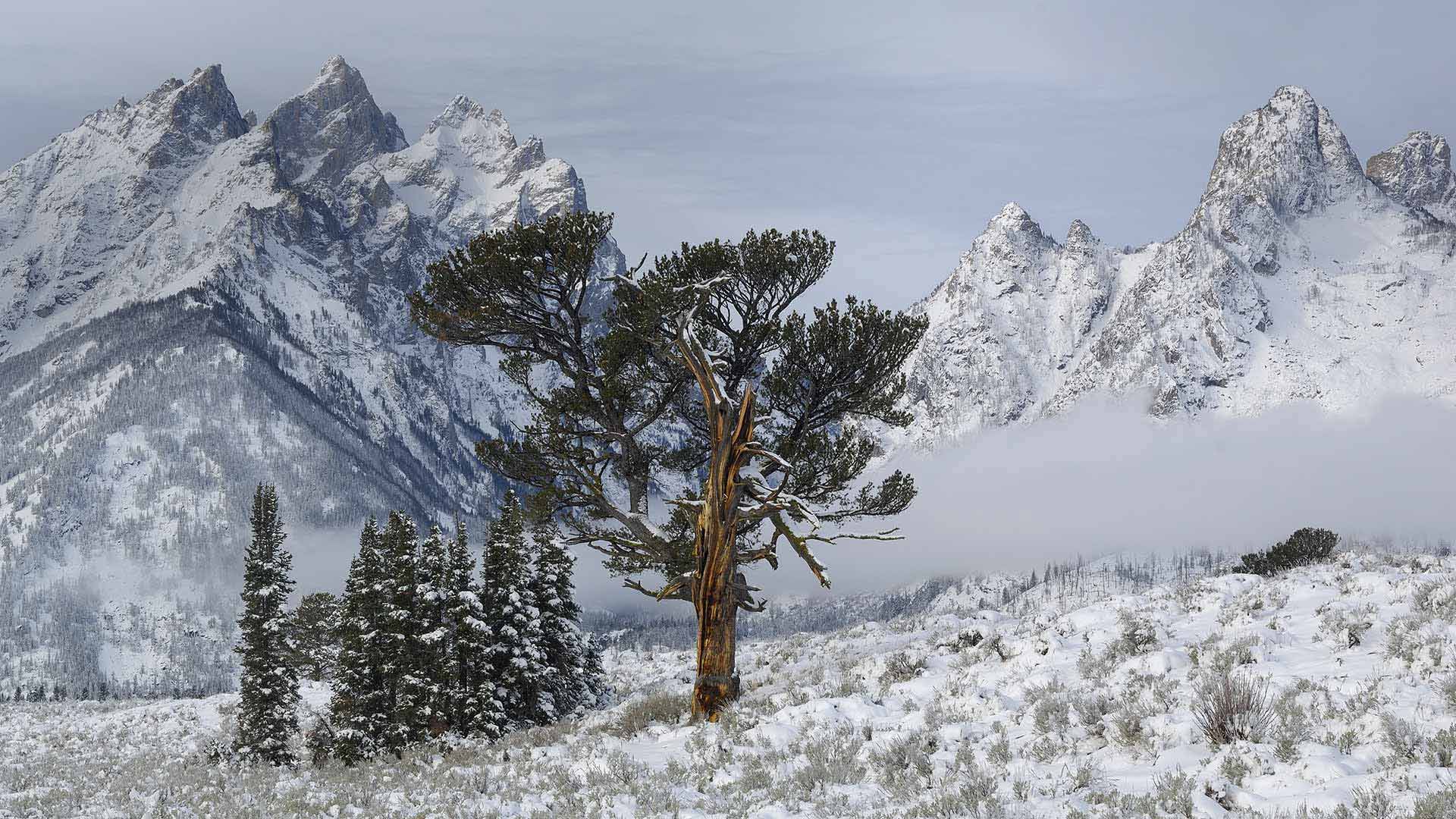
大提顿国家公园中的Old Patriarch Tree,怀俄明州 The Old Patriarch Tree of Grand Teton National Park, Wyoming (© George Sanker/Minden Pictures)
A tree amid the Tetons
This limber pine standing alone in the sage brush flats has a name—Old Patriarch. A favorite subject of nature photographers in Wyoming's Grand Teton National Park, Old Patriarch is thought to be more than a thousand years old. The 'Cathedral Group' of the Teton Mountains forms a breathtaking backdrop, bursting up from the valley floor below and stretching dramatically to the soaring peaks. The national park spreads out below the spires for 310,000 acres, creating a home for extraordinary wildlife, pristine lakes, and alpine terrain. Sounds like the Old Patriarch has found quite a home for himself.
Commonly found in the Rocky Mountains, limber pines are known to stand the test of time—literally. Some people estimate Old Patriarch to be more than a thousand years old. The 'Cathedral Group' of the Teton Mountains forms a breathtaking backdrop, bursting up from the valley floor below and stretching dramatically to the soaring peaks. The national park spreads out below the spires for 310,000 acres, creating a home for extraordinary wildlife, pristine lakes, and alpine terrain. Sounds like the Old Patriarch has found quite a home for himself.
红宝石海滩的日落,华盛顿州奥林匹克国家公园 Sunset at Ruby Beach in Olympic National Park, Washington state (© Adam Mowery/Tandem Stills + Motion)
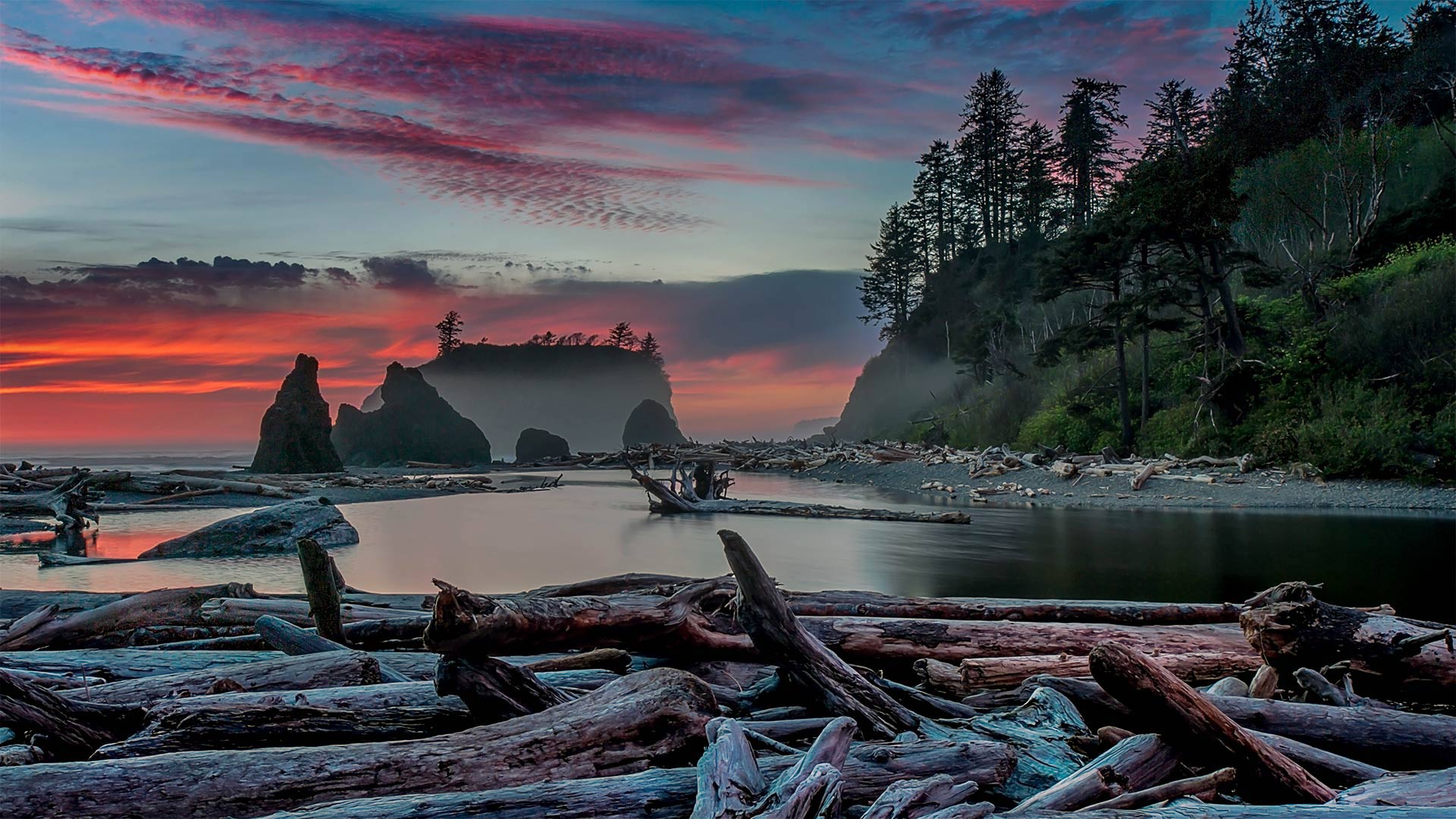
红宝石海滩的日落,华盛顿州奥林匹克国家公园 Sunset at Ruby Beach in Olympic National Park, Washington state (© Adam Mowery/Tandem Stills + Motion)
Red skies at Ruby Beach
Reddish crystals in the sand inspired the name of Ruby Beach, one of the coastal stops within Olympic National Park in Washington state. A few miles from the shore is Destruction Island, where birds such as rhinoceros auklets may stop and rest after a day of gobbling up krill and squid in the cold Pacific waters. While the park includes miles of colorful Pacific coastline, it's also famous for the Hoh Rainforest, an inland temperate forest notable for its towering old-growth hemlock and spruce trees.
